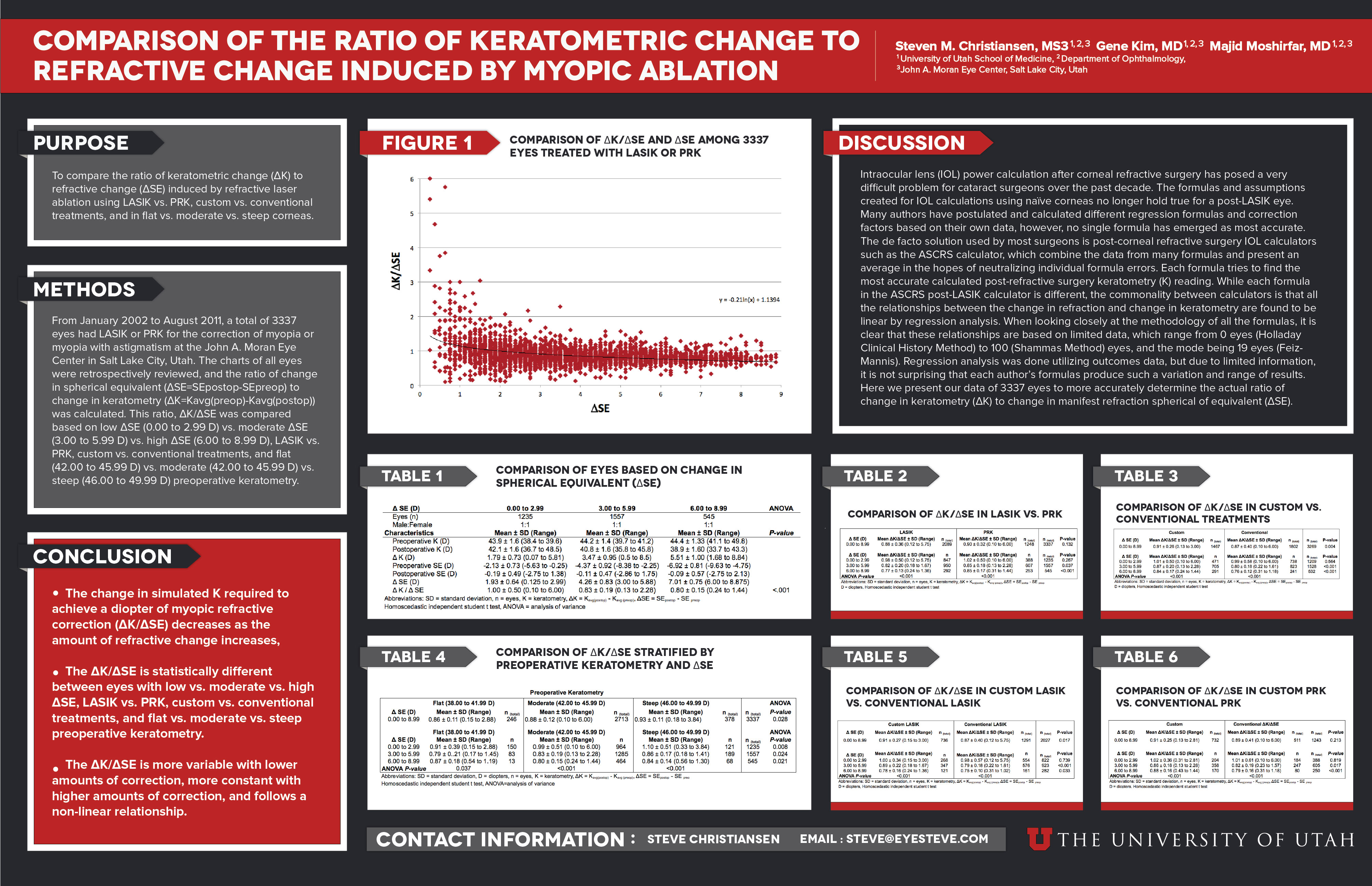Above is the poster that eyesteve.com founder, Steve Christiansen, presented at ARVO 2012 in Ft. Lauderdale, Florida. This project describes a retrospective analysis of 3337 eyes who underwent LASIK or PRK, and analyzes the ratio of change in keratometry (ΔK) to change in spherical equivalent (ΔSE) measured before and after laser ablation. This research is important to both refractive surgeons performing LASIK and PRK and to surgeons performing calculations prior to intraocular lens placement in a patient that has previously undergone laser ablation surgery.
Refractive surgeons commonly use a set of formulas to predict the postoperative curvature (keratometry) of the cornea following laser ablation, so as to more perform optimal refraction following surgery. However, the set of formulas used to make this determination assumes the ratio ΔK/ΔSE to be .8 regardless of the level of preoperative keratometry or attempted Δ SE. Our research challenges this assumption, and demonstrates that the ratio decreases with increasing Δ SE, is more variable at lower levels of ΔSE, and, possibly most importantly, this ratio is different between LASIK and PRK, custom and conventional treatments, and flat, moderate, and steep corneas.
Formulas used by surgeons to calculate postoperative keratometry should not assume a constant ratio of ΔK/ΔSE as has previously been believed, but should take into consideration these findings to more accurately predict postoperative keratometry and further improve refractive surgery outcomes.
Click here to download a pdf of this poster and click here to see a list of other past publications on ResearchGate.










